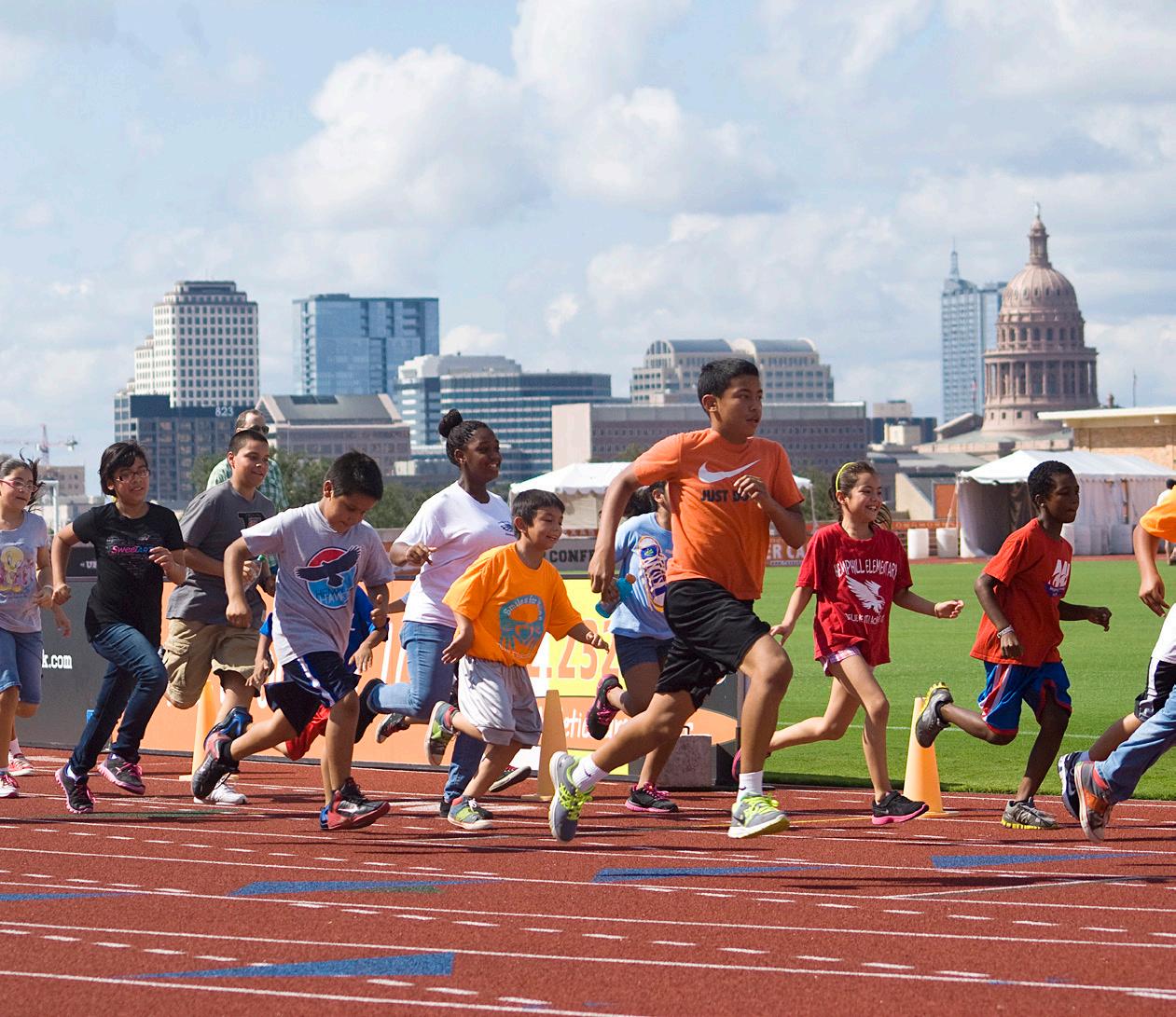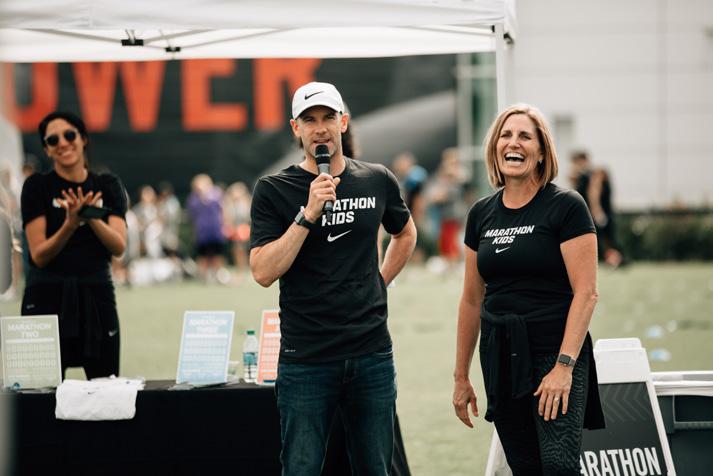
5 minute read
Running with Marathon Kids
How Marathon Kids is continuing to inspire others to live a healthy and active lifestyle — even in the virtual world.
By Emily Effren | Photos courtesy of Marathon Kids.
It’s safe to say that, with the circumstances of the pandemic, many people have become more sedentary. With more time spent at home, it’s easy to skip a run or a workout and opt for a couple more episodes instead of hitting one’s daily step goal.
“We are really in a nationwide inactivity crisis — and we were there before COVID,” Cami Hawkins, CEO of Marathon Kids says.
According to the U.S. Department of Health and Human Services, one out of every three children are active everyday, and only one in three adults achieve the recommended amount of physical activity a week.
“Marathon Kids is really founded on adults role modeling for kids, so we want to show that we not only talk the talk, but we also walk the walk,” Hawkins says.
For children aged six through 17, the recommended amount of physical activity is at least 60 minutes a day, according to the Centers for Disease Control and Prevention.
“That doesn’t mean 60 minutes in one setting. That means 60 minutes throughout the day,” Hawkins says.
However, even before the pandemic, Marathon Kids had an application in the works that would promote physical activity and allow for virtual connectivity through a cloud-based platform, called Marathon Kids Connect.
“We were already kind of prepared to meet this challenge, and then, because of where we were, we were able to add a few features so that now we can reach these kids, regardless of the environment that they’re going to be in this school year, so it doesn’t matter whether they’re on campus, at home or something in between,” Hawkins says.
With the struggles that flow in the pandemic’s wake, such as families having to adjust to online school, Marathon Kids decided to host their We Run the World virtual race throughout the month of September to motivate and encourage people to get active.
To celebrate the nonprofit’s 25-year anniversary, Marathon Kids set a goal of clocking 25,000 miles total by the end of the month of September, which is just over the total circumference of the earth. These miles were tracked through the Marathon Kids Connect app.
“The idea is that we could bring a community of runners together — that if we made a goal to run the circumference of the earth, which is just under 25,000 miles, that would be a great way to show the kids how we’re behind them in their efforts during the school year,” Hawkins says.
Even after the race, Marathon Kids’ mission is to continue to inspire kids to get active and stay active.
“We’re so lucky in Austin. Marathon Kids is incorporated into the Austin Independent School District as a piece of their physical education curriculum, and Austin ISD prioritizes physical activity in the elementary school,” Hawkins says.

Photo courtesy of Marathon Kids.
However, this is not the case for every Independent School District across the United States. According to the Harvard School of Public Health, “seven in 10 parents say their child’s school does not provide daily physical education even though experts recommend 150 to 225 minutes per school week.”
Hawkins echoes this fear.
“My biggest fear is that we’ve done a great job and a lot of hard work. But just because of the circumstances that we’re in, we may not be able to reach the kids that need us the most,” Hawkins says.
One way for parents, students and educators to ensure physical education and activity is part of a child’s everyday curriculum is to get in contact with their school and tell them about Marathon Kids. Once registered with the program, physical activity would be part of the child’s regular curriculum, and every student would have the opportunity to get in their activity every day.
“If their school is registered with Marathon Kids, and they have access to the Connect app, then we can reach them wherever they are and keep them active and healthy,” Hawkins says.

Photo courtesy of Marathon Kids.
Megan Vasquez, now a PE teacher at Becker Elementary school, first learned about Marathon Kids when her own PE teacher implemented the program when she was in elementary school. In the years following, Vasquez continued to contribute to Marathon Kids by volunteering at races, even in college.
“Marathon Kids introduced me to long distance running, showing me that any distance is possible if you put your mind to it. I went on to run track and cross country in high school, in college at Rice University, and I went on to run the New York City Marathon,” Vasquez says.
Even though she no longer runs competitively, Vasquez says the program has made her realize more benefits in addition to physical fitness.
“Running is still a major part of my life. I’ve come to realize the emotional benefits are just as important as the physical benefits of exercising and spending time outdoors,” she adds.
Hailey Walker, now a sixth-grader, was a Marathon Kid who ran almost 717.80 miles, (equal to about 27 marathons) and broke the previous record for the most miles run in a year.
“Sitting and enjoying a little TV here and there is okay, but it is way better to get out and enjoy the day and to stay fit and active,” Walker says. “If you have an imagination, then you can imagine doing all sorts of things like playing basketball with a famous player or running with a fellow athlete that you’ve looked up to.”
As of mid-September, Marathon Kids has tracked 16,800 miles, which is just over the halfway mark of their goal.
“I would just like the Austin community to know that we’ve been a nonprofit now in Austin, going on 25 years, and that we still need them. We still need their help. We still need their contributions,” Hawkins says.

Photo courtesy of Marathon Kids.










